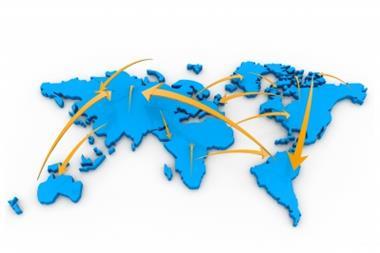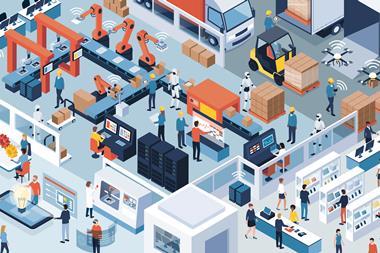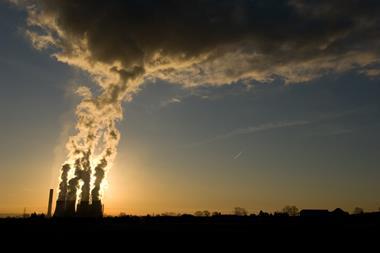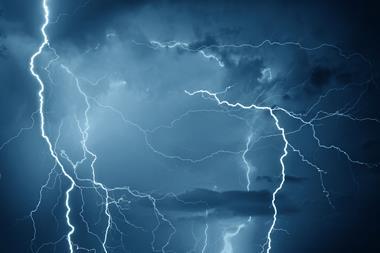An escalation of the Ukraine crisis will see global inflation increase to 7%
The latest research from trade credit insurer Allianz Trade (formerly Euler Hermes) has surveyed almost 3,000 corporates across the UK, US, China, France, Italy and Germany to understand current trends in international trade and exports.
Firms were polled both before and after the start of the conflict in Ukraine to gain an accurate picture of how their outlooks have evolved in just a few short weeks.
The findings point to declining confidence, with just 78% of exporters anticipating growth this year (compared to 94% before the conflict).
Since the crisis began, the impact of soaring energy costs has surged to the top of exporters’ agendas.
Inflationary fears
Following the invasion of Ukraine, Allianz Trade cut its forecast for global GDP growth to +3.3% in 2022 and +2.8% in 2023 (compared to +5.9% in 2021), down by -0.8pp and -0.4pp, respectively.
Almost two-thirds of our downward revision is due to confidence and supply-chain shocks, with the remainder due to higher commodity prices.
Global inflation will also prove higher and stickier (6% in 2022, revised up by +1.9pp) because of higher energy prices and longer-than-expected supply-chain disruptions, which will contribute to price pressures in equal measure.
“While current negotiations between Ukraine and Russia could provide a path towards a ceasefire, further escalation cannot be excluded, resulting in even harsher sanctions and counter-sanctions (including on energy supply).
“In such an adverse scenario, global inflation would soar to 7% this year while growth would decline to +2.5% before the global economy enters into a recession 2023 (-0.3%)”, adds Ana Boata, global head of Economic Research at Allianz Trade.
Confidence and demand shocks will result in a loss of $480 billion in exports to Russia and Eurozone countries in 2022.
In terms of trade costs, sustained higher oil prices could lead to a new record high in freight rates in Q2 (+40% vs previous peak).
Furthermore, the Covid-19 outbreaks in China and the zero-Covid policy will extend supply-chain bottlenecks and keep suppliers’ delivery times elevated.
Adapting to the ‘new normal’
Last year was an exceptional one for exporters: Overall, 7 out of 10 declare they recorded higher-than-expected export performance.
Nonetheless, exporters did have to adapt to a new normal in trade in a context of lingering lockdowns and transport bottlenecks.
Over a third of exporters in France, Italy and the UK say they also relied on finding new suppliers to cope with supply-chain disruptions, while 39% of German exporters say they focused on new export markets, mostly those close to home such as France and Spain.
Barely out of the Covid-19 crisis, and now facing the economic shockwaves of the invasion of Ukraine on global trade, what do exporters expect for 2022?
After the pandemic, new shockwaves
Before the invasion of Ukraine, companies seemed to think that 2022 would bring them even more opportunities than 2021: Overall, 94% of businesses were expecting an increase in their export turnover, with the most optimistic companies in France and Italy (97%).
Most exporters were planning to expand their businesses to new markets in 2022 (79%), especially Chinese and American firms (92% and 84%, respectively).
But the military aggression in Ukraine and the massive sanctions imposed against the Russian economy changed the story.
“Unsurprisingly, the war rattled these expectations: the share of respondents expecting an increase in their export turnover dropped from 94% to 78% (-16 pp).
”Even if Russia and Ukraine are not key final markets for European exporters, the war situation is affecting global trade through indirect effects (supply chains, raw material, energy), weighing on export opportunities for firms”, adds Françoise Huang, senior economist for Global Trade and APAC at Allianz Trade.
Energy prices a major concern
The “grand reopening” of the global economy in 2021 was a rollercoaster ride for companies as global supply-chain disruptions sent transportation costs and energy prices surging to record highs.
Indeed, the companies surveyed said that the top five risks that affected export growth in 2021 were uncertainty about demand due to Covid-19 (40%), high energy prices (35%), labor shortages and costs (35%), transportation costs (33%) and input shortages (30%).
Will 2022 bring some respite? Even before the invasion of Ukraine, companies were not entirely convinced.
Energy prices were already by far the top concern, with 72% of companies saying they expected them to remain a challenge in 2022, and over a third expecting them to become more of a challenge this year.
The share of exporters expecting energy prices to become more of a challenge in 2022 is highest in Italy (46%), followed by the US (38%) and France (37%).
Since the invasion of Ukraine, high energy prices have become even more of a concern for European exporters. “The share of European corporates that expect high energy prices to become more of a challenge has increased from 37% to 56%, with most worried in countries with the highest dependency on imports of gas: Italy (66% compared to 46% pre-war), the UK (62% compared to 47% pre-war) and Germany (52% against 34% pre-war).
“The fact that France has the lowest share of companies concerned by high energy prices (46% vs. 37% pre-war) likely reflects the implementation of the government’s ’Resilience Plan’ that takes into account the cost of the energy bill for most corporates”, says Ano Kuhanathan, head of Corporate Research at Allianz Trade.
Non-payment risk to increase
Exporters’ exposure to non-payment risk seems to have increased of late. The survey shows that overall, non-payment issues had a moderate or significant impact on export activity over the past 12 months for nearly 60% of firms, with the highest shares in France (66%), China (65%) and the US (58%).
Moreover, despite the strong economic rebound in 2021, cash hoarding in many corporates and a solid recovery in global trade, 50% of our respondents declare that payment times got longer in 2021, especially in France (62% of firms).
Interestingly, among firms that have undertaken digitalisation – which would have been expected to smoothen transactions – 58% of respondents still reported longer payment times.
Non-payment risk will besides remain an issue for exporters in 2022: Before the invasion of Ukraine, nearly one exporter out of three expected payment terms and non-payment risk to increase.
Following the invasion and the consequent impact on the global economy, more than half of respondents in Europe now expect non-payment risk to increase in the next six to twelve months.
Similarly, over 40% of European exporters now expect payment terms to lengthen after the war broke out.
Calls for continued state support
A majority of exporting firms (54%) received some form of state support over the last 12 months, especially in China (70%) and Italy (60%).
Two-thirds of respondents confirm that this support in part helped their business survive the crisis.
“As many economies are struggling with skilled labour shortages in Europe, 44% of firms in France, 45% in Germany and 53% in Italy call for their governments to implement upskilling labour policies.
”Moreover, unsurprisingly, after a few years of somewhat protectionist US policies and a year into Brexit, almost half of US and UK firms want their governments to deliver new free trade agreements”, says Allianz Trade’s Boata.
While the worst of the pandemic appears to be behind us, around 50% of European exporters say additional state support in the form of more state-guaranteed loans and direct subsidies would help their business better withstand the impact of the war.
In fact, even before the start of the war, over 30% of all firms surveyed expected state support to fund their activities in 2022. Financial state support seems to have become a “new normal” for some firms.
Wave of reshoring yet to materialise
For all the concerns about the beginning of the end of globalization, the COVID-19 crisis did not spark a wave of reshoring in 2021.
But most companies in the survey (79%) still prefer to produce on home ground, ranging from 74% in the UK to 89% in China.




















No comments yet